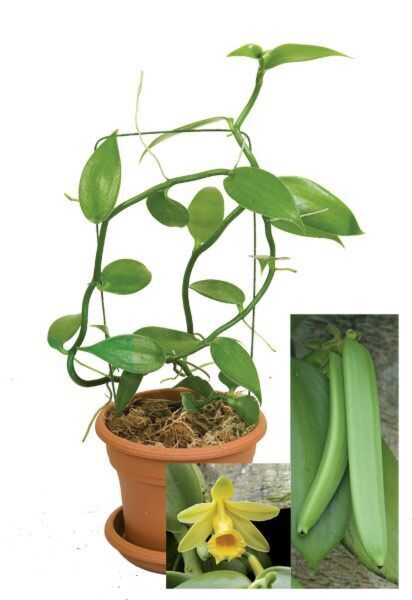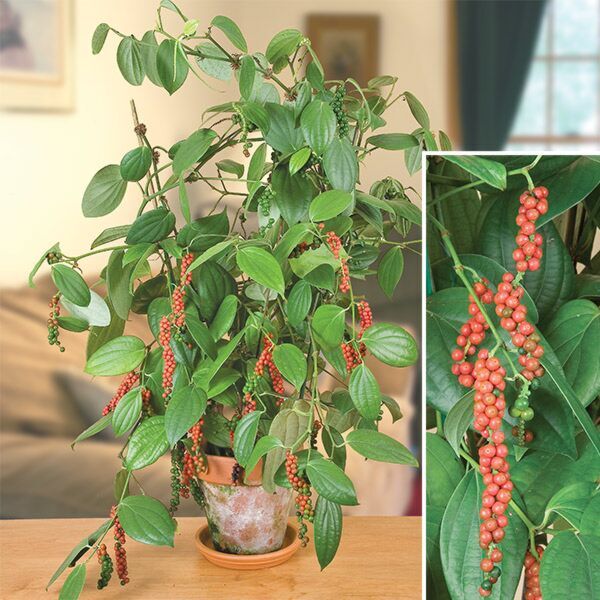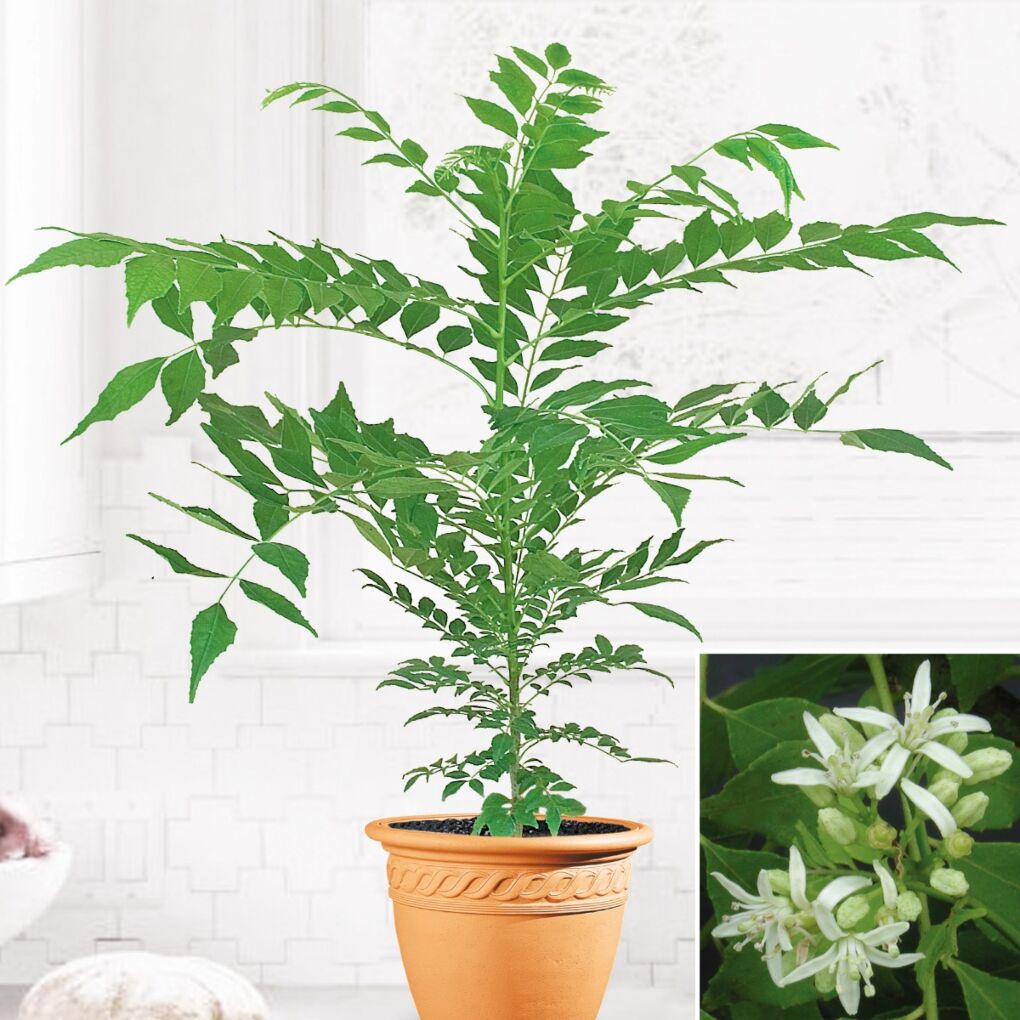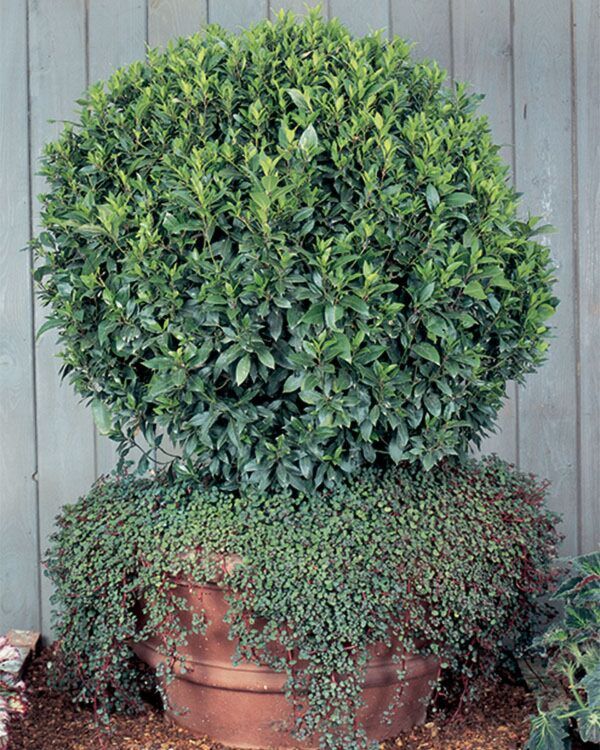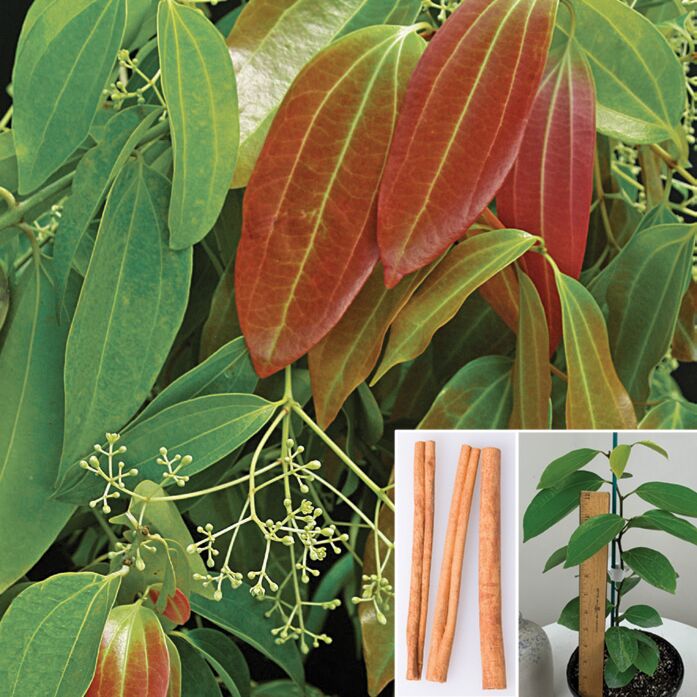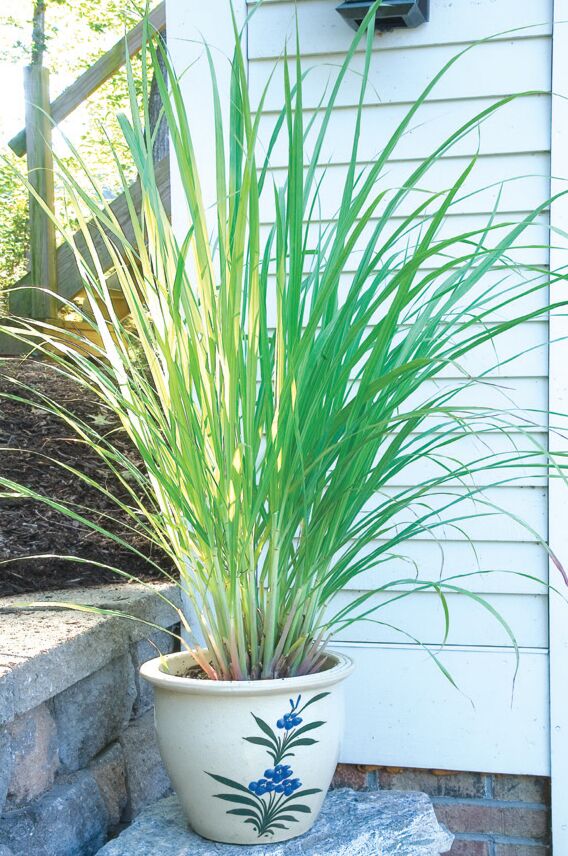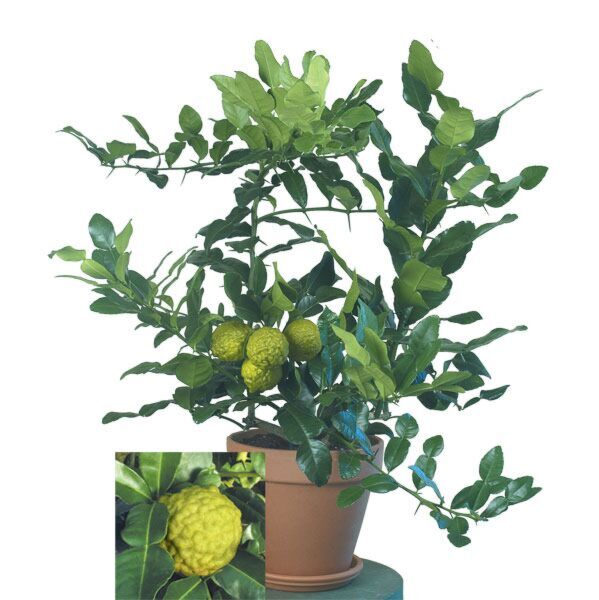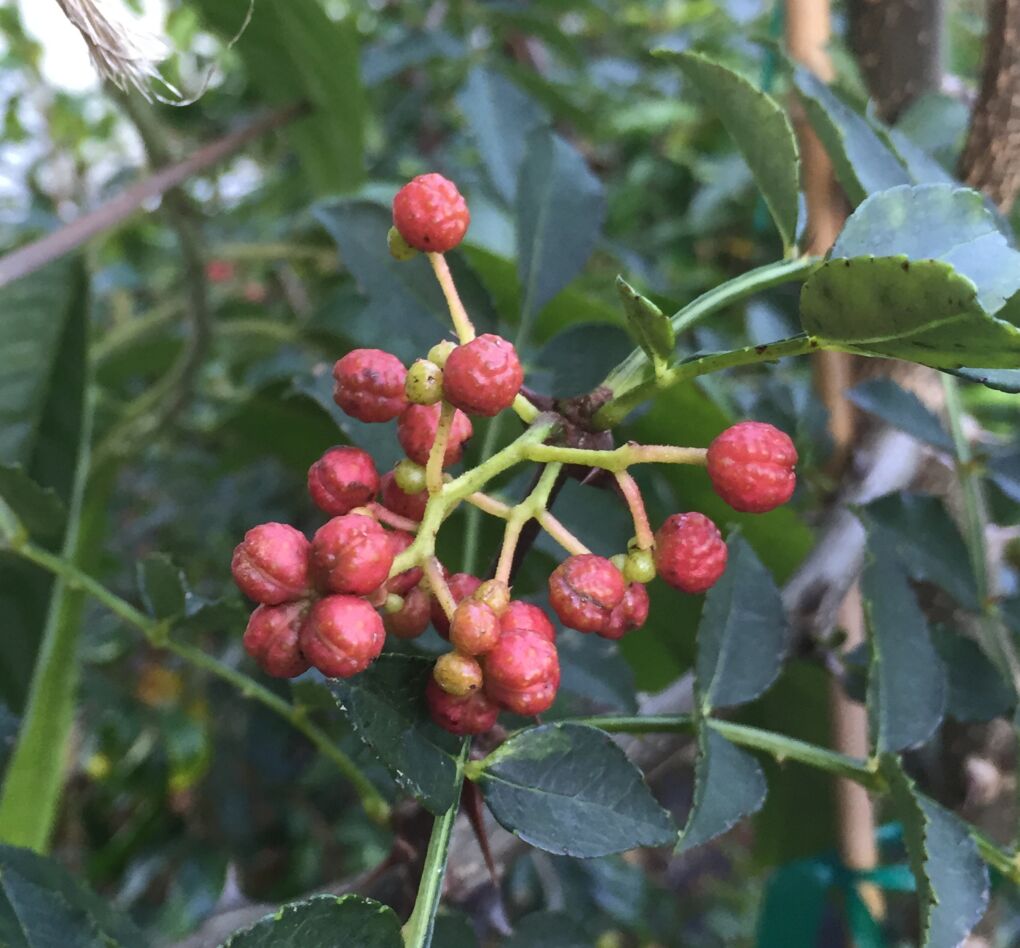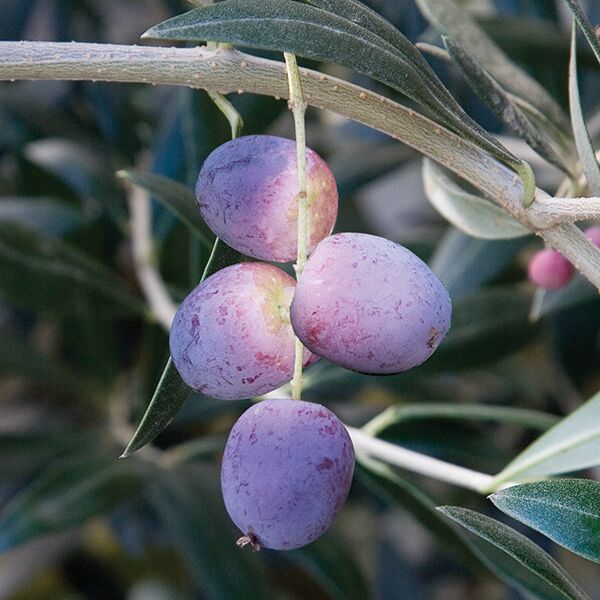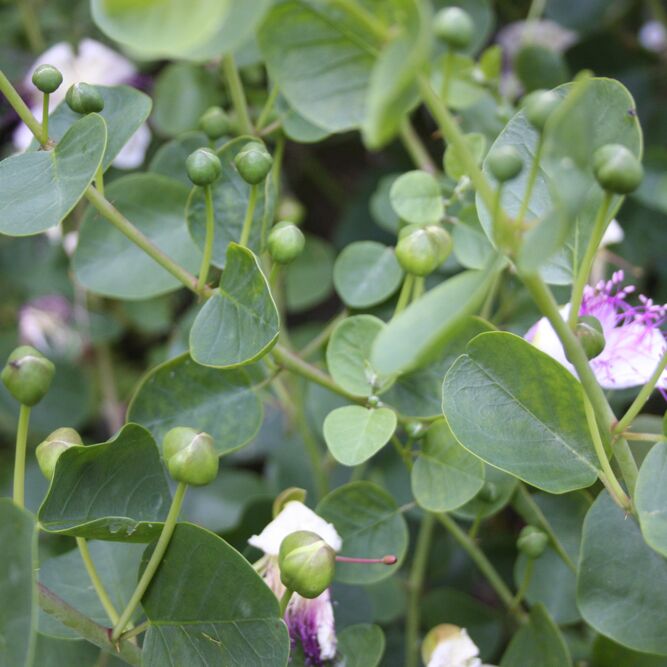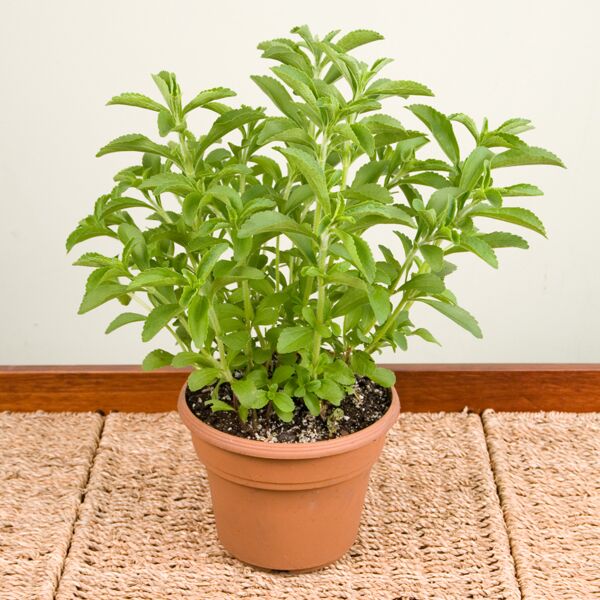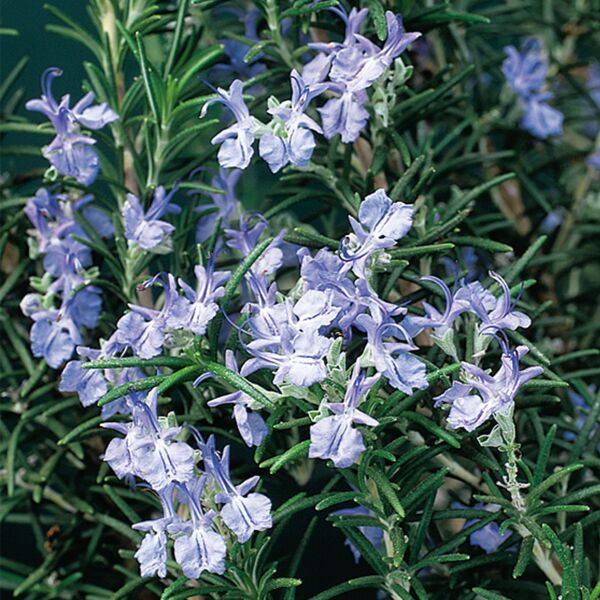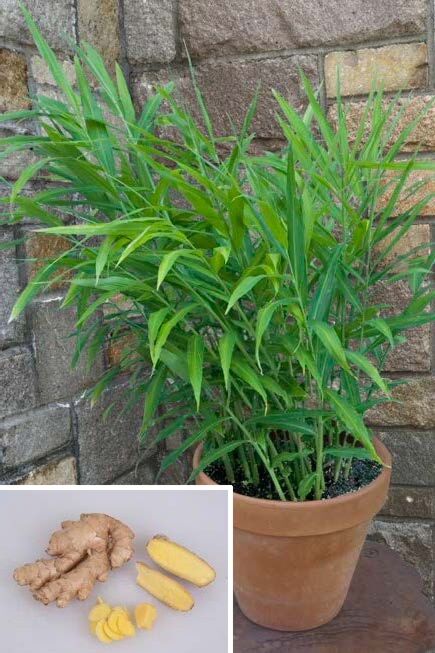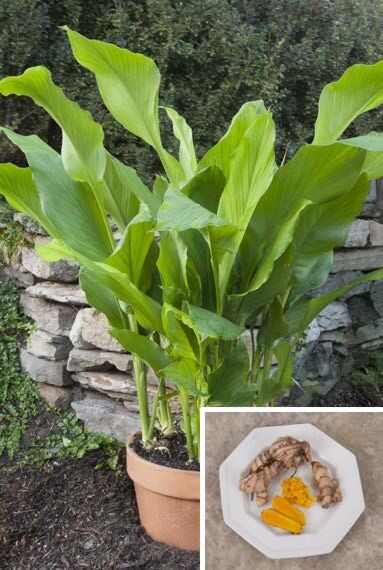Vanilla Bean Orchid Plants
Vanilla Vine
Often called the Vanilla Bean Orchid, this all-green Vanilla Vine produces the tasty vanilla bean much coveted by bakers. It is a somewhat slow growing vine and needs a stake or trellis to climb on. Once it has matured, it will begin to flower. Each beautiful Vanilla Orchid flower only lasts one day but other flowers will open on the spike on subsequent days. The flowers need to be hand pollinated to produce vanilla beans.
⇨ Learn more about Vanilla Vines
Black Pepper Plants
Black Pepper Plants
The Black Pepper of commerce, this South Asian tropical vine produces chains of small round fruit. By choosing the time of harvest and the method of processing, all four types of peppercorns (black, white, green and red) can be harvested from the same plant. Plants require high temperature and optimum light for fruiting. Piper nigrum blooms freely through the summer months and the fruits ripen the following year. Young plants can take 3-4 years to come into bloom but even modest-sized plants will yield hundreds of peppercorns. Soon you'll be able to grind your own peppercorns for fresh, aromatic pepper!
⇨ Learn more about Black Pepper Plants
Curry Leaf Plants
Curry Leaf Plant
The famed Curry Leaf plant, native to India and Sri Lanka, makes a wonderful potted plant for your culinary collection of aromatic herbs. The fragrant leaves have a nutty, pungent flavor and it’s a prized addition to South Indian foods being a main ingredient in delicious curries. Curry Leaf has an upright and open growth habit. The segmented foliage is borne on a compact bush making it convenient for harvesting. When harvesting leaves, it’s best to remove entire leaflets or cut back 3-4” of top leaf growth to encourage many side leaf shoots to develop, promoting a bushy growth habit. Small, white, fragrant flowers produce viable seeds inside the mature black fruits. Curry Leaf is easy-to-grow in a container, and it’s highly prized by both the gardener and the chef.
⇨ Learn more about Curry Leaf Plants
Bay Leaf Plants
Bay Leaf Plant
It’s easy to grow your own bay leaves for soups, stews, curries or meat marinades. The Bay Leaf plant, sometimes called Bay Laurel, has leathery green leaves that can be harvested any time of the year to use fresh or dried for later use. When cooked, the leaves impart a savory flavor but it’s best to remove the leaves before serving since they remain rigid even after cooking. Bay Leaf plant makes an excellent houseplant since it’s easy to grow in a container and it may be moved outdoors during the warm summer months or planted in the garden in zones 9 and higher. Bay can also be trained into a decorative standard. Bay leaves also make lovely herbal wreaths.
⇨ Learn more about Bay Leaf Plants
Cinnamon Spice Plants
Cinnamon Spice Plant
Cinnamomum zeylanicum, or Ceylon cinnamon, is the true cinnamon of the spice trade. It makes a wonderful container plant since the tree is slow growing. Juvenile leaves have a rich reddish- bronze color and mature leaves have a spicy aroma when rubbed. Spires of white flowers appear in spring and summer followed by small purple fruit. When the plant matures, the outer bark is scraped off and long rolls of the inner bark are cut to form cinnamon sticks. Fragrant and highly aromatic, curled cinnamon bark is used for cooking as well as herbal medicine. Cinnamon is reported to reduce blood sugar and calm nerves. Grow in an acidic potting mix in warm temperatures. Plants are approximately 12-14” tall as shown in the inset photo.
⇨ Learn more about Cinnamon Spice Plants
Lemon Grass Plants
West Indian Lemon Grass Plant
Native to southern India, West Indian Lemon Grass is a widely used aromatic herb. The plant grows in dense clumps with the leaves reaching 3’ tall. The entire stalk (bulb and grass) has a light lemon flavor and is used in soups, curries or teas. West Indian Lemon Grass is much preferred over the seed-grown East Indian variety since it’s larger and more flavorful. Lemon grass contains citrol and is made into teas to aid digestion. This tropical perennial performs well as a container-grown herb.
⇨ Learn more about Lemon Grass Plants
Lime Leaf Tree
Lime Leaf Tree
Highly sought after, this useful citrus tree is most often used for its aromatic leaves. If creative cooking appeals to your senses then you won’t want to be without Lime Leaf in your collection. The popular Tom Yam soup in southeast Asian food would not be the same without Lime Leaf. The leaves add a lemony flavor to foods while the rough skin that covers the fruit is used as a rind in curries. The plant has a spreading to sprawling habit and its shiny leaves are curiously segmented. This is a strong grower that is adaptable to varying cultural environments.
⇨ Learn more about Lime Leaf Trees
Szechuan Pepper Plants
Szechuan Pepper Plant
Szechuan Pepper is the source of the culinary spice used in Szechuan cooking. Deciduous in nature and hardy to Zone 6, Szechuan Pepper is an abundant producer of small red berries that are harvested at the end of summer or early fall. The outer husk surrounding the seed is ground into an aromatic spice that may be used alone or as a component of Chinese Five Spice blend and has a lemony, peppery taste with a slight numbing sensation to the lips and tongue. Szechuan Pepper is easy-togrow and will fruit in a couple years from our cutting-grown plants. At Logee’s, we grow Szechuan Pepper in a container where the height is easily maintained with a little pruning.
⇨ Learn more about Szechuan Pepper Plants
Olive Tree ‘Arbequina’
Olive Tree 'Arbequina'
This self-fertile olive from northern Spain is used both for its oil and as a table olive. Olives are easy-to-grow, rugged plants that tolerate dryness both in soil moisture and humidity and a wide variation in temperature from just below freezing to the triple digits. To successfully flower plants, give lots of sun and a period of 30-45°F at night on a consistent basis during the winter. ‘Arbequina’ is a great olive for pots as it flowers at an early age, often when no more than a foot in height, and produces an abundance of small, dark tasty olives.
⇨ Learn more about Olive Tree ‘Arbequina’ Plants
Spineless Caper Bush
Spineless Caper Bush
Spineless Caper Bush is grown for its small flower buds that are harvested before they open and preserved as capers for use in culinary dishes like pasta, stews, fish, chicken or meat. It’s a low-growing, spineless shrub with arching stems and small round leaves. Flower buds arise in summer on one-year-old wood and should be harvested when they are 1/4” – 1/2” wide, otherwise the flowers will start to open. The large, white flowers have long lavender stamens that are showy and fragrant. Capers need to be preserved before they are eaten. They may be pickled in vinegar or salted brine. Capers add a pungent peppery-mustard flavor to food. Native to the Mediterranean, Spineless Caper Bush needs to be grown hot and dry. Overwatering is a sure way to kill it. Grow in a well-draining soil mix amended with sand, rocks or perlite to simulate its natural growing environment.
⇨ Learn more about Spineless Caper Bush Plants
Sweetleaf Stevia Plant
Sweetleaf Stevia Plant
With more natural sweetness than sugar, Stevia is grown for its sweet leaves. This tropical herb was discovered in Paraguay where it has been used for centuries as a natural sweetener for yerba mate tea. Stevia is a healthy alternative to sugar or artificial sugar substitutes. This all-natural sweetener has zero calories, zero carbohydrates and a zero glycemic index, so it’s a perfect solution for people on low-carbohydrate or low-sugar diets. Simply harvest the fresh leaves and steep in water for 30 minutes. The sweet liquid can be used to sweeten any beverage or food.
⇨ Learn more about Sweetleaf Stevia Plants
Rosemary Plant ‘Logee Blue‘
Rosemary Plant 'Logee Blue'
A favorite herb for culinary use, Rosemary 'Logee Blue' is adaptable to garden and indoor container culture. Its aromatic foliage may be picked fresh or dried for later use, and it's most often used for flavoring meat dishes of all kinds. This beloved herb has been with us at Logee's as far back as anyone can remember. Its upright habit makes it suitable for topiary culture. When grown indoors, provide cool winter nighttime temperatures and keep it close to a window to stimulate flowering.
⇨ Learn more about Rosemary Plant ‘Logee Blue‘
Edible Yellow Ginger Root Plants
Edible Yellow Ginger Root Plant
Edible Yellow Ginger Root adds flavor and zing to many delicious culinary dishes. Pickled ginger root is a staple when eating sushi. Ginger has long been used in herbal medicine for its digestive properties. Plant ginger in a large pot or fabric grow bag that gives it plenty of room to expand. Ginger grows up and out from the original rhizome. Place 4-5” of potting media with compost or other organic matter mixed into the bottom of the pot. Add the Ginger Root and cover with 1-2” of soil. Make sure the roots stay warm. Give lots of water and fertilizer during the growing season. Every 4-6 weeks, add 2-3” of soil on top of the growing ginger. During September to October, you’ll be able to harvest baby ginger that has a mild flavor without skin or fiber. This can be pickled, frozen, canned or candied. For a more robust flavor, allow the ginger to mature until late December or early January. (Those in northern climates can bring the plants inside.) Once the leaves begin to die back, stop watering and harvest your ginger roots. The ginger roots will have a thick skin and a hotter flavor. You’ll be able to enjoy delicious ginger root that you’ve grown in your own garden. We recommend 2 or 3 plants for a 14” pot.
⇨ Learn more about Edible Yellow Ginger Root Plants
Turmeric Plant
Turmeric Plant
Known for its culinary flavor and healing properties, this vibrantly colored root spice is native to southeast India and a member of the ginger family. The leaves have an upright growth habit reaching 3’ tall in a container. The aromatic rhizomes that produce the turmeric grow underground. Turmeric needs a sunny warm exposure during the summer growing season to thrive. In areas that experience winter, plants should be brought inside before freezing and the foliage allowed to die back to the soil level for its winter dormancy. During this time, it is important to keep the soil dry. Turmeric rhizomes can be dug any time after dormancy. This spice is well known for its immune enhancing properties; it’s an anti-oxidant and anti-inflammatory. It is also a mainstay in culinary dishes like curries and many Indian and South Asian foods.
⇨ Learn more about Turmeric Plants
Pandan Grass
Pandan Grass Plant
Widely used in Southeast Asian cooking as a flavoring for rice, chicken, beverages and pastries, the leaves of Pandan Grass impart an aromatic flavor to food. This upright plant has slender, green leaves and aerial roots at the base. Pandan leaves are easily made into a paste for later use in a variety of recipes. Simply cut the leaves into small pieces and boil with water until the leaves are soft then process to make the ready-to-use paste. The leaves are also used for wrapping meats before cooking.
⇨ Learn more about Pandan Grass Plants



